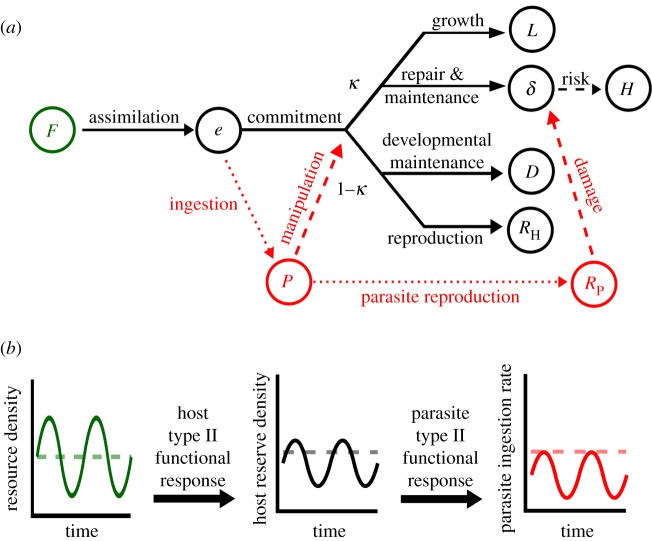Figure 1.
Schematic of (a) the dynamic energy budget (DEB) model for a free-living host (black) infected with a population of parasites (red). DEB theory tracks assimilation of food resources (F, green) into energy reserves, e. Reserve energy is then committed to somatic or reproductive processes with a fixed allocation fraction, κ. Reserve allocated to soma pays for maintenance and repair, which decreases damage, δ, and surplus is used for structural growth, which increases length, L. Allocation to reproduction similarly pays developmental maintenance, and surplus fuels additional development, D, or reproduction, RH. Here, a population of parasites, P, exerts four potential effects (red dotted and dashed lines). Trophically, parasites consume host reserves, increasing their own biomass and ultimately producing new propagules, RP (dotted lines). Physiologically, parasites can also manipulate the host's allocation rule and induce tissue damage upon emergence (dashed lines). (b) Visual illustration of the hypothesis that resource fluctuations inhibit parasite ingestion. Compared with constant resource density (dashed lines), resource fluctuations (solid lines) and the host's type II functional response combine to induce fluctuations and lower the mean density of host energy reserves. In turn, these effects combine with the parasite's type II functional response to cause fluctuations and lower the average per parasite ingestion rate, limiting parasite growth, reproduction and virulence. (Online version in colour.)

